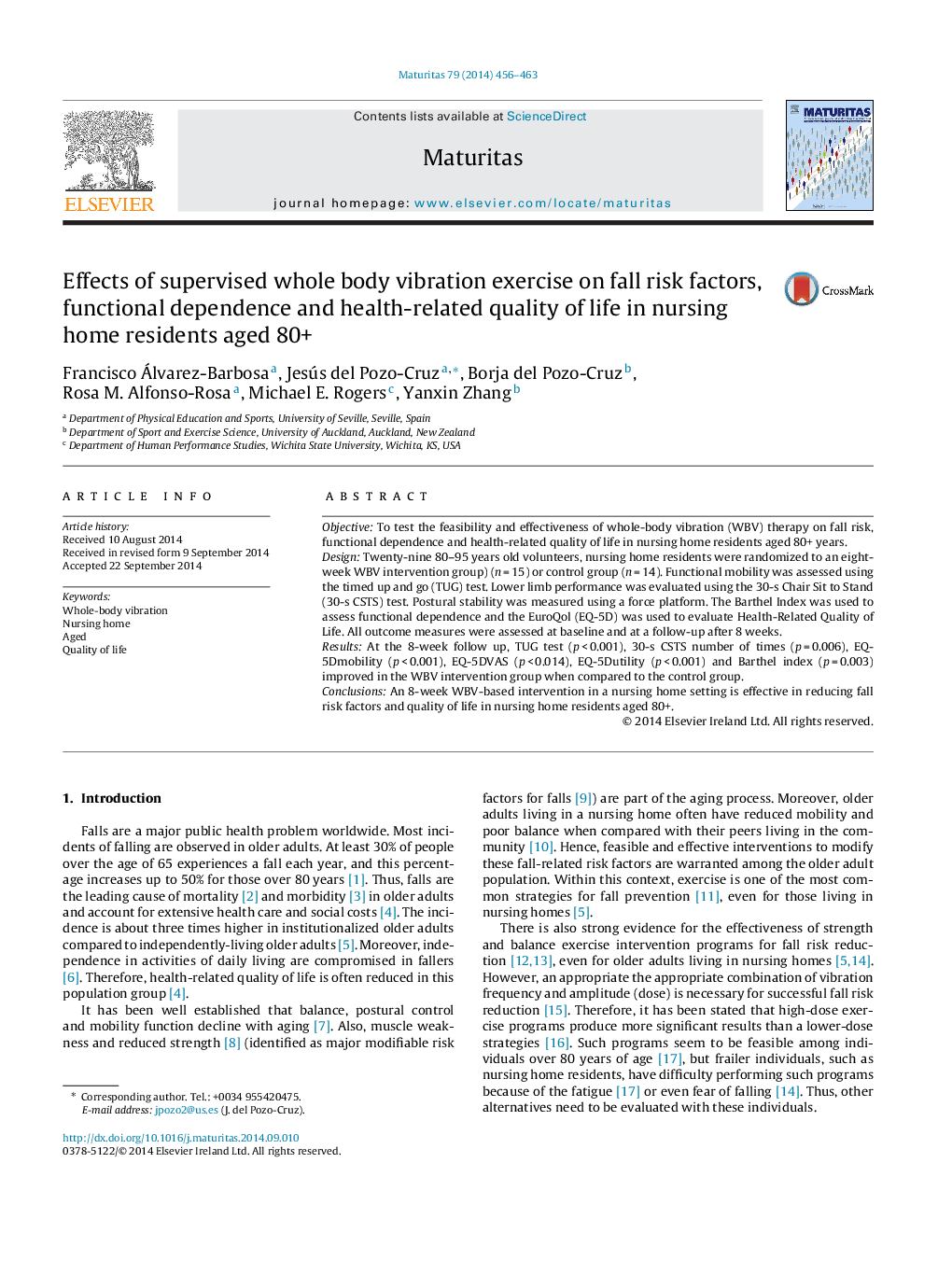| Article ID | Journal | Published Year | Pages | File Type |
|---|---|---|---|---|
| 1917186 | Maturitas | 2014 | 8 Pages |
•Whole Body Vibration (WBV) training has been suggested to be an effective way to reduce risk of falls among elderly but has been rarely investigated among nursing home residents.•The application of an 8-wk WBV-based intervention in a nursing home setting is feasible and effective to reduce fall risk factors, improve performance in activities of daily living and increase health-related quality of life in nursing home residents over the age of 80 years.•The intervention presented here could operate as a model for nursing home practitioners to implement WBV as an exercise-based management intervention for residents in nursing homes.
ObjectiveTo test the feasibility and effectiveness of whole-body vibration (WBV) therapy on fall risk, functional dependence and health-related quality of life in nursing home residents aged 80+ years.DesignTwenty-nine 80–95 years old volunteers, nursing home residents were randomized to an eight-week WBV intervention group) (n = 15) or control group (n = 14). Functional mobility was assessed using the timed up and go (TUG) test. Lower limb performance was evaluated using the 30-s Chair Sit to Stand (30-s CSTS) test. Postural stability was measured using a force platform. The Barthel Index was used to assess functional dependence and the EuroQol (EQ-5D) was used to evaluate Health-Related Quality of Life. All outcome measures were assessed at baseline and at a follow-up after 8 weeks.ResultsAt the 8-week follow up, TUG test (p < 0.001), 30-s CSTS number of times (p = 0.006), EQ-5Dmobility (p < 0.001), EQ-5DVAS (p < 0.014), EQ-5Dutility (p < 0.001) and Barthel index (p = 0.003) improved in the WBV intervention group when compared to the control group.ConclusionsAn 8-week WBV-based intervention in a nursing home setting is effective in reducing fall risk factors and quality of life in nursing home residents aged 80+.
